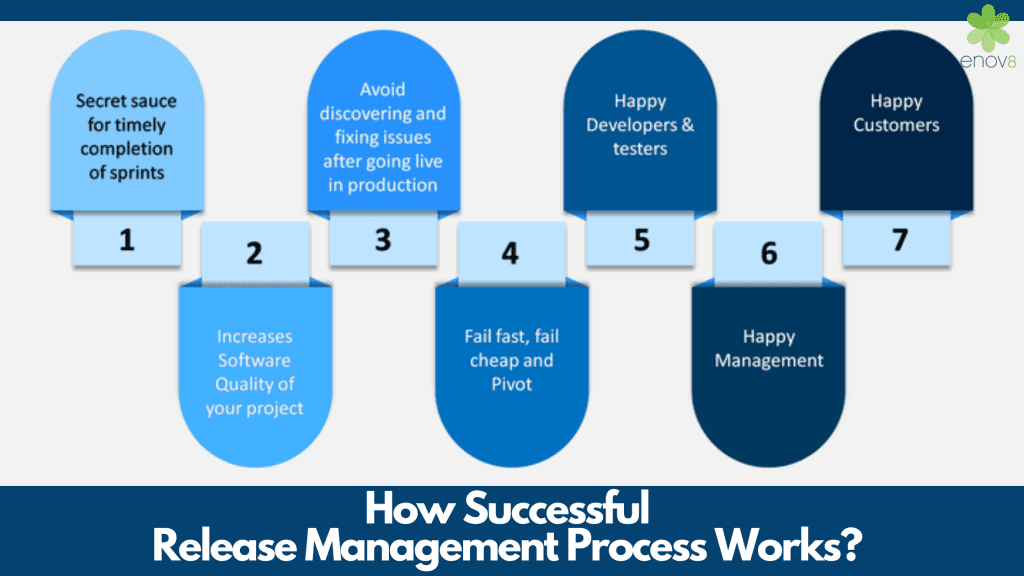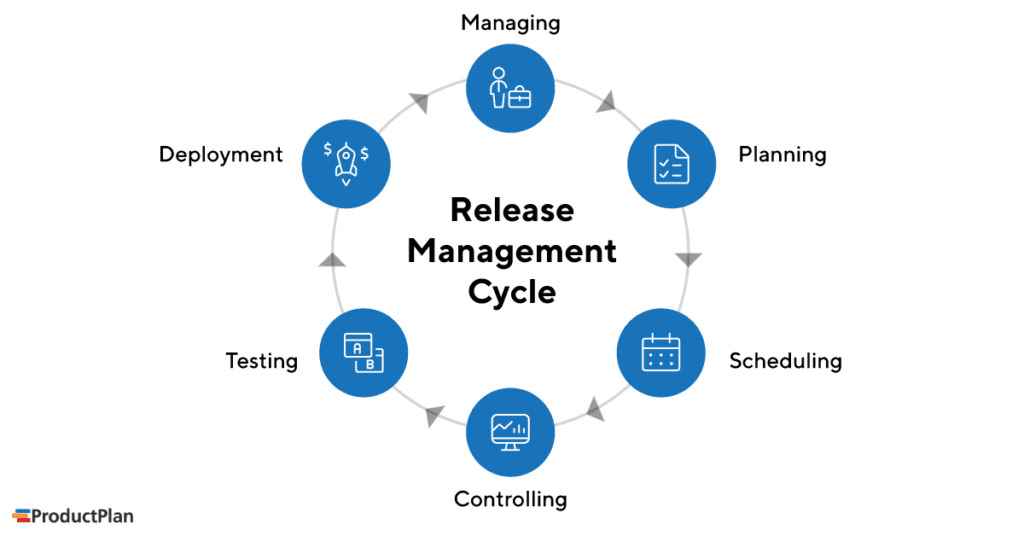
In the era of constant innovation and evolution, you can’t afford to deploy inefficient releases. It is imperative that you invest in a strong release management process and relevant tools. This will help to limit costly delays and ensure smooth organisational workflow.
What Is The Release Management Process?
If your organisation is involved in making considerable software changes, you might already be familiar with trustworthy release management processes and release management tools.
An effective release management process monitors all the stages of SDLC from creation to final deployment. Every time a change is implemented in an existing product or any new product is developed, release management is necessary.
While release management processes need to be customised for every company, there are five fundamental phases to release management.
Utilising the correct enterprise release management tools is key to robust release management processes.
Steps Of Release Management Process
Planning Step
In this phase, your entire release is strategized and structured from the start till the end. Therefore this phase is the most time-consuming.
A robust release plan:
- Helps all the relevant teams to remain on track
- Ensure compliance with organisational standards
- Help fulfilling company requirements.
SDLC or systems development life cycle (SDLC) is one of the most common release management approaches.
The SDLC approach ensures quality and greater efficiency during planning, creating, maintaining, and updating software systems. The SDLC method can either be used independently or in collaboration with other IT project management processes.
To plan and clarify your release management process, you can use various techniques, including-
- Release management checklist mentioning the roles and responsibilities in an approximate chronology.
- Developing a release workflow.
Following should be included in your release plan:
- Relevant timelines
- The overall scope of work
- Delivery dates and deadlines
- Project requirements
After final approval, you can start the implementation.
Development Step
The development phase involves the actual creation of the software. The product development should follow the requirements mentioned in the release plan.
After successfully addressing all the predicted issues and designing the software, it’s time to test the developed product in a real-world scenario.
This may involve various iterations.
- Once the development team gradually creates the product, it is pushed to a test environment for user acceptance ( generally an automated process using enterprise release management tools).
- This enables the team to determine any issues that may happen in the real environment.
- As bugs are identified, the software build is again sent back to the development phase, stage two. This process can get repeated multiple times unless the release is approved.
Testing Step
User acceptance testing or UAT is the phase where the software build gets tested in the real world scenario. The end-users actually use the product and provide feedback.
The testing can be done in two ways-
- Offering free online beta trial online
- Sharing the product with a larger team of employees within the organisation.
UAT is a vital phase in the release management process since it involves data collection and identification of fixes needed to achieve the final desired build for the official launch.
As discussed before, this phase involves an iterative process. As bugs are identified, the product goes back to the development stage for relevant bug resolution and redesigning to achieve greater integrity.
The software build needs to pass the UAT testing phase before final implementation and release.
Also Read: A Practical Guide To A Successful Release Management Process
Prepare To Release
In this step, any finishing touches and final changes to the product are implemented, considering the UAT feedback.
This phase of the release management process also involves a final quality check by the QA team.
The QA team conducts the final review to ensure:
- The product fulfils the required minimum acceptable standards
- Compliance with business requirements mentioned in the planning stage.
Although it is not necessary that the UAT and QA process will be able to replicate every scenario and predict all the bugs that may arise. However, these phases churn out the most plausible bugs before launch.
After successful review completion, the relevant functional team pushes the product for deployment. Before the software build is released into the live environment, it needs approval from the product owner.
Deployment Stage
This is the final step of the release management process. The deployment stage involves-
- Sending out the software build into the production environment
- Training and education about the product to the end-user and your organisational teams at large.
For example, the users should have a thorough understanding of how to operate with the new features. Finally, the software development team needs to examine the product’s performance and discuss how the deployment went in the deployment phase. If any lingering concerns are identified in the discussion, those should be documented and addressed in the next iteration.







